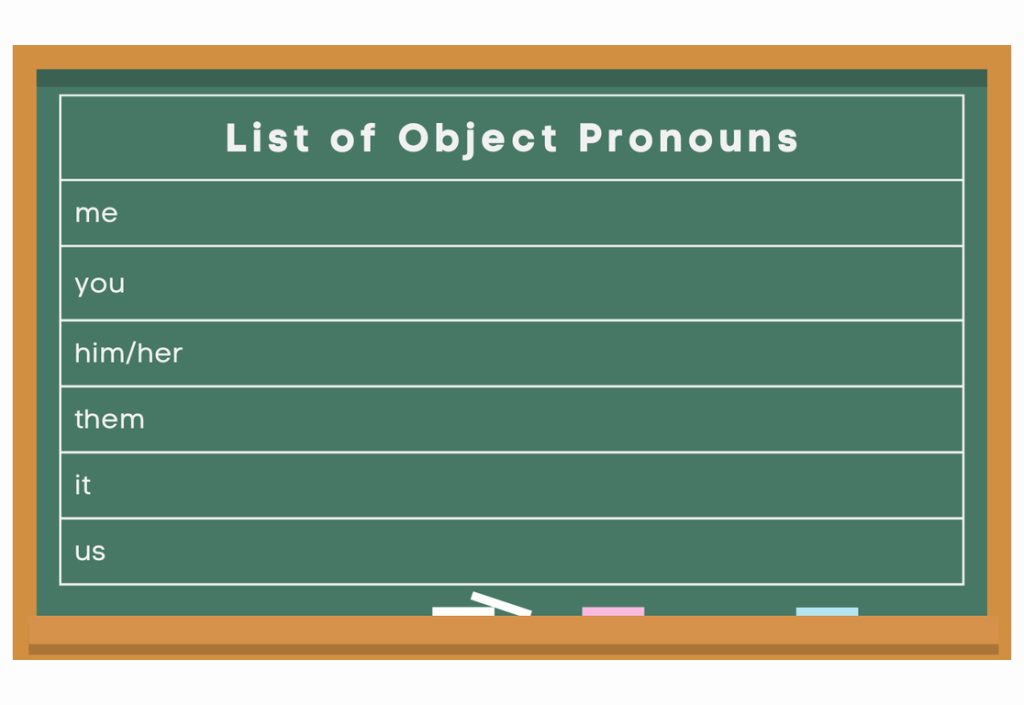Understanding Object Pronouns – Usage & Examples
Introduction
Object Pronouns
Object pronouns play a crucial role in language by replacing nouns and making sentences more efficient. Let’s delve into the world of object pronouns and explore their significance in linguistic communication.
Analogy of Definition
What are Object Pronouns?
Object pronouns are pronouns that receive the action of a verb in a sentence. They replace nouns that act as the objects of verbs or prepositions, helping to avoid repetition and simplify sentences. Common object pronouns include “me,” “you,” “him,” “her,” “it,” “us,” and “them.” Object pronouns are crucial in identifying who or what is receiving the action in a sentence. For example, in the sentence “She hugged him,” “him” is the object pronoun receiving the action of hugging. This contrasts with subject pronouns, which perform the action.
Method
Direct and Indirect Object Pronouns
A direct object pronoun replaces the noun that directly receives the action of the verb. An indirect object pronoun replaces the noun that receives the direct object or benefits from the action of the verb.
List of Object Pronouns

Using Object Pronouns
Object pronouns are utilized to avoid repetition of nouns and streamline the structure of sentences. They are placed before the conjugated verb or attached to the end of an infinitive or present participle. Let’s have a look at some examples.
Examples
Example 1:
Original sentence: She gave her friend a gift.
With indirect object pronoun: She gave her a gift.
- “Her friend” is the indirect object, replaced by “her.”
- “A gift” is the direct object.
Example 2:
Original sentence: He sent his parents a letter.
With indirect object pronoun: He sent them a letter.
- “His parents” is the indirect object, replaced by “them.”
- “A letter” is the direct object.
Example 3:
Original sentence: She gave the book to me.
With both pronouns: She gave it to me.
- “The book” is the direct object, replaced by “it.”
- “To me” is the indirect object, replaced by “me.”
Example 4:
Original sentence: He showed the picture to us.
With both pronouns: He showed it to us.
- “The picture” is the direct object, replaced by “it.”
- “To us” is the indirect object, replaced by “us.”
Example 5:
Original sentence: She gave her friend a gift.
With indirect object pronoun: She gave her a gift.
- “Her friend” is the indirect object, replaced by “her.”
- “A gift” is the direct object.
The use of direct object pronouns, such as ‘her,’ ‘us,’ and ‘it,’ replaces specific nouns in sentences to avoid repetition and enhance clarity. By employing direct object pronouns, language becomes more concise and effective in conveying the intended message.
Quiz
Tips and Tricks
1. Placement of Object Pronouns
Tip: Direct object pronouns are placed before the conjugated verb or attached to the end of an infinitive or present participle.
2. Agreement of Object Pronouns
Tip: Object pronouns must agree in gender and number with the nouns they replace.
3. Avoiding Redundancy
Tip: Use object pronouns to avoid repeating nouns and make sentences more concise.
Real life application
Scenario: The Gift Exchange
In a gift exchange among friends, they decided to use object pronouns to refer to the recipients of the gifts instead of repeatedly mentioning their names. This made the process of exchanging gifts more efficient and enjoyable.
Scenario: The Travel Itinerary
When planning a trip, using object pronouns to refer to destinations and travel companions helped streamline the communication and avoid unnecessary repetition of place names and people’s names.
Scenario: The Classroom Presentation
During a classroom presentation, the use of object pronouns enhanced the clarity and flow of the speaker’s speech, making it easier for the audience to follow the content.
FAQ's
Like? Share it with your friends






